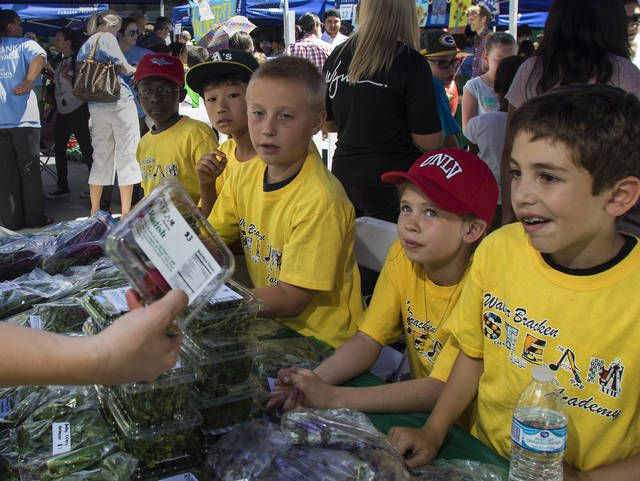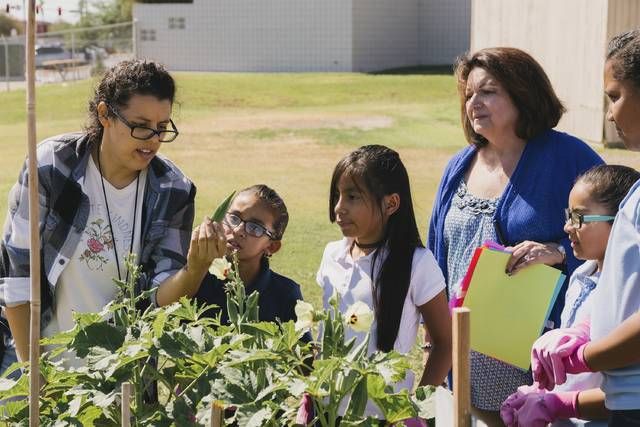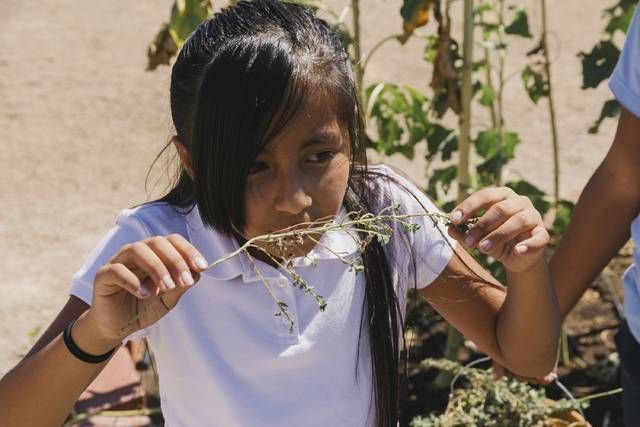Click here to subscribe today or Login.
LAS VEGAS — Recession’s injuries do not heal on an even timeline, and one of southern Nevada’s deepest wounds refuses to close.
Food insecurity threatens to derail the region’s nascent recovery and ripple through parts of the community rarely thought of as connected to it.
One in 7 households in Clark County qualifies as food insecure, defined by Three Square Food Bank as not having access to sufficient nutritious food. In the valley’s hardest-hit ZIP code — 89106, near downtown — that share leaps to more than 25 percent.
This alarming rate contributes to Nevada’s national rank of 31st in food insecurity from 2013-15, according to the United States Department of Agriculture. That represents a vast improvement from the state’s recession-era floor of 46th, but compared with the days before the bust, Nevada remains troubled.
More than 106,000 children comprise about 40 percent of the county’s food insecure, and hungry kids struggle to learn — the Clark County School District’s lowest-performing schools serve large numbers of students from food-insecure households, while its best-rated schools correlate to the lowest incidence of hunger.
The elderly also face enormous risk, as nearly 14 percent of Nevada’s seniors also fit the definition of food insecurity.
Individual hardship corrodes the community beyond the obvious. Food insecurity underlies persistent problems in education, health care and the local economy.
A 2014 report by the nonpartisan Bread for the World Institute estimates food insecurity increases health care costs in the U.S. by at least $160 billion each year. The condition links to depression, cardiovascular disease, high blood pressure, diabetes and other mental and physical ailments.
Those consequences affect everyone. The Center for American Progress estimated in 2010 that it cost every citizen $542 to deal with the national hunger problem, and that it caused the economy $168 billion in lost productivity.
Nevada’s work on the problem
The state’s action plan is laid out in the 2013 report Food Security in Nevada. It indicates that the Great Recession motivated leaders from the government and the private sector to “better understand the root causes and negative impacts of hunger and to explore potential strategies to reduce it.”
The result was the Governor’s Council on Food Security, established by Gov. Brian Sandoval in 2014 and made up of appointed members ranging from Steve Fisher, head of the state Division of Welfare and Supportive Services, to Amy Hill, a Walmart government relations exec representing food retailers. The council’s strategy includes building a network of corporate and local markets, community gardens and anti-hunger efforts working together to eliminate the hunger gap. Its 2016 report says 1 in 6 Nevadans still aren’t sure where they’ll get their next meal, but it also shares accomplishments, including the formation of the Nevada Nutrition Assistance Consortium to ensure collaboration between food and nutrition programs.
That’s because food insecurity is not just an issue of general access to sustenance; it’s also about the quality of that sustenance. The valley is dotted with so-called food deserts, areas that lack supermarkets or other places to buy fresh food. The USDA’s map indicates that within each of these local zones, at least a third of the residents are at least a half-mile from a large grocery store, with the heat and lack of walkability decreasing the chances those without transportation will make the trip. But even if stores popped up in the neighborhoods that most needed them, it might not be a panacea.
The Nevada Legislature passed several bills this session that should aid such efforts here in the Las Vegas Valley.
A case study: Quannah McCall Elementary School
To kids who’d never tried fresh strawberries or cantaloupe before a recent school tasting, kale was a hard sell. But after growing the deep-green stalks in their campus garden, students at Quannah McCall Elementary School in North Las Vegas learned that massaging the leaves makes them less bitter, and that dressing whipped up from the cilantro growing nearby makes them delicious.
Principal Ana DeBeauvernet recalls a lot of demand from parents for the recipe. It was a shining moment for everyone who envisioned the raised beds and fruit trees along the school’s street-facing fence as a way to engage the neighborhood in a new way of thinking about cooking and eating. It’s in a noted food desert, meaning the only options are gas stations and fast-food joints.
“I don’t think our families are purchasing those fruits and veggies, because of the mindset that the produce section is the expensive section,” STEAM teacher Sarah Clancy-Wright said of the likelihood poor families might still choose microwave macaroni or a $5 pizza.
“And if they’re not exposed to it at home, it goes into the trash at school,” DeBeauvernet added, explaining that children might not recognize or like certain elements of subsidized meals.
McCall has several designations indicating socioeconomic hardship, from Prime 6 and Title I to the Victory Schools Program. But affording the garden was as simple as giving up some grass for a rebate from the water district that paid local crowdfunding platform Green Our Planet to plan and execute the installation.
Elena Fernandez, a classroom aide and the garden’s champion and chief steward, said the build had spectators in the apartments flanking the school. It quickly went from curiosity to community project, with people young and old coming by to lend a hand.
With the first harvest in the spring, following three seasons of working out the kinks in another campus plot, school staffers have seen students blossom along with the tomatoes, zucchinis, peppers, grapes, melons, herbs and more. On a recent Friday, second-graders picked and bagged basil, thyme and oregano with a recipe for “Kid-Friendly Tomato Sauce.” Neighborhood moms have come to expect such gifts. They have a standing invitation to chef demos in the outdoor classroom, and Fernandez makes a habit of handing paper bags full of produce over the fence.
Fernandez knows the rhythms of the community, where many parents have casino jobs and leave their kids to feed themselves. She remembers the $2 nachos from the gas station, the hot dogs and noodle cups.
“When you’re home alone and you’re that age, that’s what you eat,” she said. “It’s something I wanted to change. . The neighborhood, they were excited when the garden was being built. I want them to feel like it’s theirs.”
The kids appear to feel that ownership.
“Look at that tomato!” exclaimed another young boy, kids swarming a fat pomegranate gleaming in the sun. The next moment, he was politely showing off the compact cantaloupes and watermelons on the vine, his favorites.








